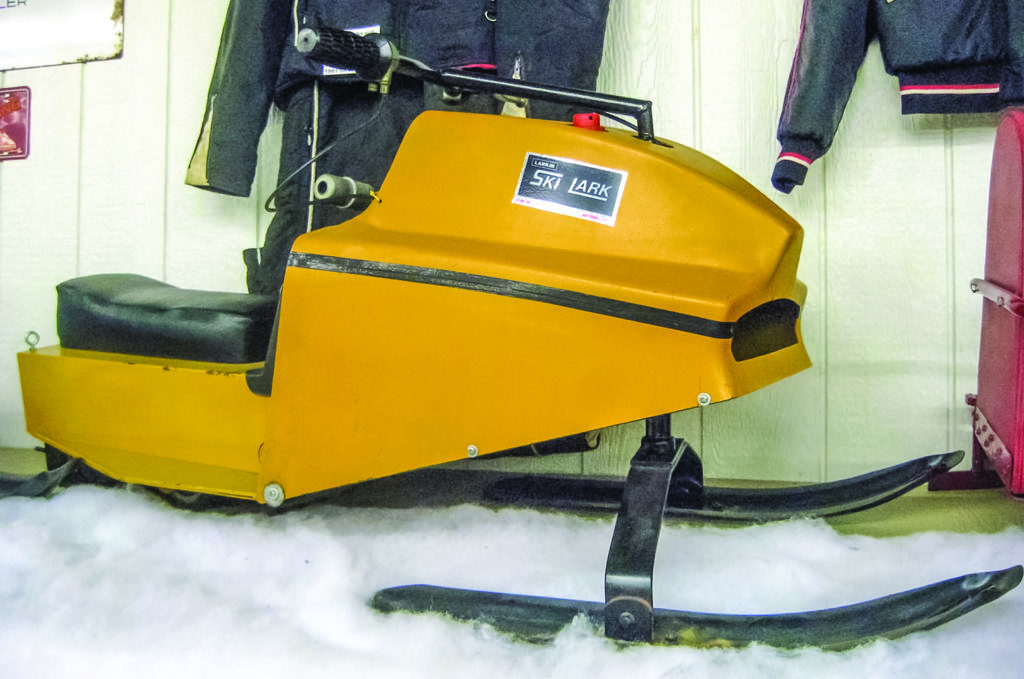
Could a California-based company that specialized in vintage airplane restoration make a legitimate mark in the snowmobile market? There was only one way to find out. The Larkin Aircraft Company was incorporated in December, 1968, by World War II Army Air Corps pilot and flight instructor Keith Larkin in Watsonville, California, south of San Francisco on the Monterey Bay coast.
The company’s foundation was based on renovating and restoring WWII airplanes, but it also began manufacturing mini-bikes and tiny utility vehicles based on the mini-bikes. When it moved to snowmobiles, it created two low-tech but interesting and memorable machines most notable for their diminutive size and affordable price.
On A Lark
Conceived at least in part by Walter Zurowski, the Larkin Ski-Lark made its debut for model year 1971. Since California snowmobiles were going to be transported across the state to the Sierra Nevada Mountains to be ridden, the Ski-Lark was engineered to be as compact, simple, light and inexpensive as possible. The manufacturer stressed that it was built with aircraft quality from standard snowmobile industry parts, but there really wasn’t much to the claim.
The tiny sled had a 10-inch wide rubber track and bogie wheels in the back, and a single transverse leaf spring shared by the skis. It was attached to a vertical steering post extending up through the hood, where it connected to the handlebars with a tiller bar.
A Tecumseh four-stroke lawnmower engine delivered its 4 hp through a Salsbury clutch and a small jackshaft across the tunnel to a motorcycle sprocket and chain drive in a thin fiberglass housing. A motorcycle-type twist throttle was used, and there were some reports of it freezing up in cold weather.
It was so underpowered and minimalistic that the prototype Ski Lark didn’t even have a brake. It did have a simple windshield but that was quickly discontinued. The machine weighed just 106 pounds and was small enough to fit in the trunk of a Cadillac or the back end of a station wagon.
Advertised as being one-third of the size, and one-third of the price, of a conventional snowmobile, the Ski-Lark was claimed to have the same power-to-weight ratio and performance of full-sized sleds. But the claimed top speed of 20 to 25 mph was certainly not in the big sled class.
Neither was the ride quality or the handling with the transverse ski spring, an idea that had been tried and rejected by numerous mini-sled manufacturers. And since there were no lights or alternator to run them it was a daytime-only machine, although a lighting kit was supposedly available.
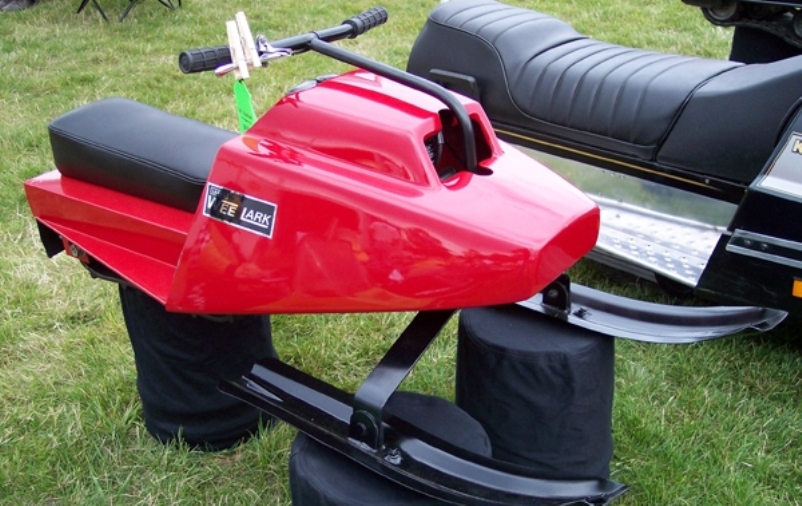
By the following fall, an even smaller sibling appeared that was based on the original Ski-Lark prototype that had been upgraded before going into production. The Wee-Lark was positioned strictly as a kid’s sled. It was pretty much the same machine as the Ski-Lark but its tunnel was 8 inches shorter and it also had a shorter track, plus it was powered by a smaller engine – a 3 hp two-stroke.
Testing The Tiny Twins
Los Angeles-based Popular Snowmobiling magazine was produced by exactly the kind of people that these machines were intended to serve, so a couple of the magazine’s writers took their wives and kids to test a group of 1972 Ski-Larks and Wee-Larks in spring snow in the High Sierras. They said the sleds ran all week from early morning until after dark and “gave no trouble at all – probably because they’re made by a builder of airplanes.”
The testers advised keeping the Ski-Lark out of deep powder if the rider weighed more than 125 pounds because the larger rider would cause the sled to sink. But they did say that it would go most places a big sled would go, and noted that it handled a 180-pound rider while pulling three kids and two dogs on a toboggan.
“The engine is fairly quiet,” the magazine reported. Testers emphasized that “It’s certainly not a toy,” concluding that “all of us agreed that this sled is FUN!” emphasizing the word in capital letters.
The magazine testers also found that the sub-mini Wee-Lark was “very quiet with a tuned muffler, and that’s something the neighbors will appreciate as the little kids churn up the snow by the hour in the backyard.” They concluded that “the little chugger does about 12 miles an hour and will keep the little guys happy all day long.”
Evolution
Larkin Aircraft relocated from Watsonville to nearby Freedom, California, and continued to develop the Ski-Lark. Production rights for the tiny twins were later sold to Watsonville-based Zurowski Enterprises. Newer Ski-Larks were a couple of inches longer, had a cleated track and a grab bar on the back end, but otherwise stayed pretty much the same through the mid-1970s, although some had a slightly larger 5 hp, 133cc Teke engine.
The most simple and basic snowmobile ever seriously marketed, the Ski-Lark and Wee-Lark actually sold in decent numbers, probably due to their incredibly low prices. They still show up at today’s vintage shows, where they usually draw a crowd of curious onlookers.
Editor’s Note: Every Snow Goer issue includes in-depth sled reports and comparisons, aftermarket gear and accessories reviews, riding destination articles, do-it-yourself repair information, snowmobile technology and more. Subscribe to Snow Goer now to receive print and/or digital issues.

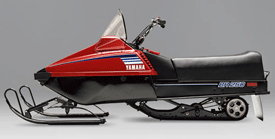
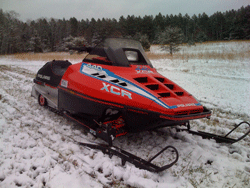
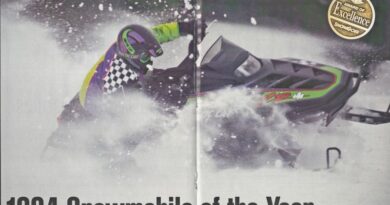
Pingback: Ski-Lark and Wee-Lark: Simple Snowmobiles - GearOpen.com
Very well written and accurate article, It was my idea along with to build the Ski Lark and Wee Lark. You should check out the Sea Lark, The Hill Cat and the Jobber. Don’t forget to look up the Larkin Sky Lark Aircraft. The Sky Lark was the first VW powered manufactured aircraft. It was featured on the cover of Air Progress and in Janes Aircraft.
FYI.
all the best,
Kevin Larkin